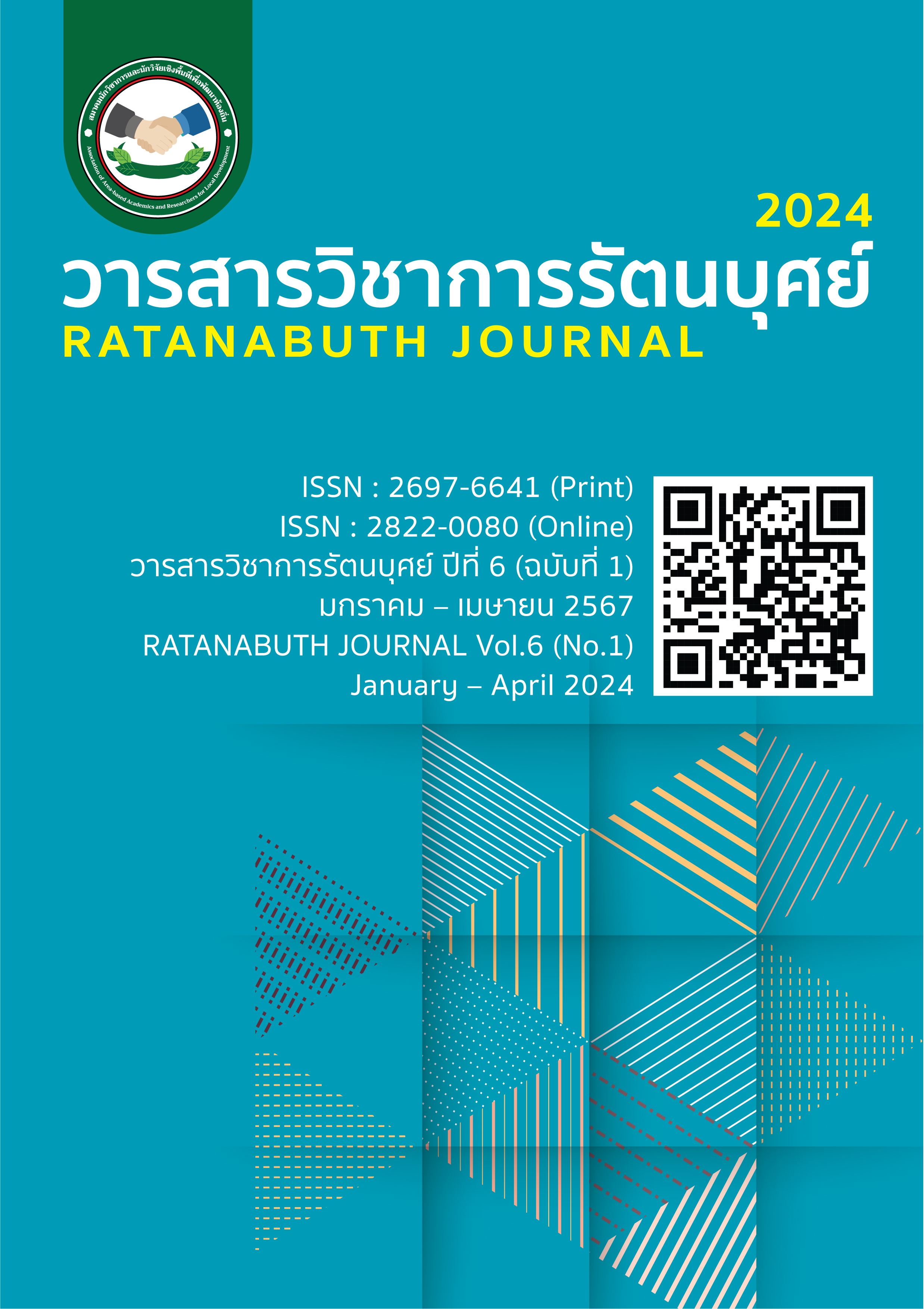Management of the Taiping Cultural Road, Changsha, Hunan Province, for the Creation of a Sustainable Creative Economy Management of the Taiping Cultural Road, Changsha, Hunan Province, for the Creation of a Sustainable Creative Economy
Main Article Content
Abstract
The objective of this research is to study the community culture of Taiping Road, Changsha City, Hunan Province, in terms of history, arts and culture, distinctive identity, buildings, important people in the study area. including policies regarding the management of Taiping Road by analyzing the guidelines for managing community culture on common issues. To present guidelines for managing the Taiping Road Economic and Cultural Area, Changsha City.
The results of the research found that the Taiping Road community culture It is different from the surrounding community. Due to government policy that focuses on development without integration with the community foundation Therefore causing the cultural way of life to change according to the social and environmental context. In addition, the community used to adjust its cultural management practices to be closer to modern cultural ways. By integrating existing knowledge to create new guidelines for use in their own communities. While maintaining the foundation of traditional knowledge, small details have been adjusted to suit the social context. which is beneficial to society and for sustainable modern economic security
Article Details

This work is licensed under a Creative Commons Attribution-NonCommercial-NoDerivatives 4.0 International License.
References
Anna Mariene Karlsson. (2021). Cultural heritage and the future. International Journal of Heritage Studies. Retrieved 2021, 08 10 from: http://www.tandfonline. com/doi/full/10.1080/13527258.2021.1971740, Pages 129-131.
CCTV News (2020). May Day Holiday: CCTV Takes You on a Virtual Tour of Taiping Street in Changsha. Changsha Evening News. 2020-05-02. Retrieved from https://www.icswb.com/h/103999/20200502/656078.html
Chen, Siyi. (2018). Protection of Historical and Cultural Street Areas from the Perspective of Continuation of Urban Historical Context—A Case Study of Liuzi Street in Yongzhou. In Proceedings of the 2018 Annual Conference of the Chinese Urban Planning Society and Hangzhou Municipal Government. Chinese Urban Planning Society, Hangzhou Municipal Government. pp. 483-491.
Chen Xianshu.(2005).Xiangcheng visited ancient China. Beijing: Chinese Opera Publishing House.
Chistine Landorf. (2009). Managing for sustainable tourism : a review of six cultural World Heritage Sites, Journal of Sustainable Tourism, 17(1), 53-70.
Falk, N. (1986). Baltimore and Lowell: Two American approaches. Built Environment, 12, 145-152.
Geng Huizhi. (2008). Selection of local urban planning regulations documents. Nanjing: Southeast University Press.
Guo, Runkui. (2008). Implementation and Management Strategies of Historical and Cultural Street Area Conservation Planning in Taiping Street. Doctoral dissertation National University of Defense Technology.
He, Bin. (2013). A Study on Adaptive Protection Strategies for Historical and Cultural Street Areas. Doctoral dissertation, Central South University.
Hunan Provincial People's Congress Standing Committee Office. (2016). Regulations on the Protection of Historical and Cultural Cities in Changsha. Hunan People's Congress Website. 2016-09-01. Retrieved from https://www.hnrd.gov.cn/content/2006/07/22/7267205.html
Hou, Zehua. (2016). Exploration of Organic Renewal Compound Strategies for Historical Street Areas in Chaozong Street, Changsha. Doctoral dissertation, Hunan University.
Mumford, Lewis. (2005). The City in History. Beijing: China Architecture & Building Press.
Shen Xiaoding (2018). Memory of a city - Changsha in old maps. New Hunan - Hunan Daily New Media 2018-08-07. Retrieved from https://www.hunantoday.cn/news/xhn/201808/14441807.html
Shi Luguo. (1985). The Social Organisation of the Northern Tunguska, Inner Mongolia. People's, Publishing House.
Shi Yantao. (1993). Review of Jiao Dafeng, the first governor of the revolution. Yiyang: Journal of Yiyang Normal College, 94.
Sima Qian. (1959). Shiji. Beijing: Zhonghua Book Company.
Wang, Jian, Li Ting, (2018). Research on the Value Identification and Expansion of Historical and Cultural Street Areas—Taking the Renovation and Planning of Yueliang Dongting South Road Historical and Cultural Street Area in Yueyang as an Example. Heritage and Protection Research, 3(10), 71-77.
Xiao, Bei. (2017). Research on Territorial Landscape Design of Chaozong Street in Changsha City. Doctoral dissertation, Hunan Agricultural University.
Xia, Sanao. (2017). Digital Design and Research of Ancient Buildings in Liuzi Street. Journal of Hunan University of Science and Technology, 38(10), 89-91.
Yang Tao. (2010). Changsha Historical and Cultural City Protection Plan (Outline). Changsha: Changsha Urban and Rural Planning Bureau.
Victor J. Babanak. (2012). Design for the Real World. Beijing: CITIC Press.
Zeng Jing. (2019). Protection strategy of historical district under the perspective of architectural typology — Take the Dongting South Road area of Yueyang City as an example. Journal of Yueyang Vocational and Technical College, P45-48.
Zhang Yulong (2009). describes the ancient street culture in modern Changsha. Changsha: Hunan Normal University.
Zheng Jiaming, Chen Xianshu, Huang Qichang. (1997). Changsha economy and Trade Records. Changsha: Hunan Literature and Art Publishing House.
Zheng Jiaming, Liang Xiaojin, Yang Xigui. (1997). The history of Changsha. Changsha: Hunan Literature and Art Press.
Zhou Shang, Chen Chao, Chang Chaoqun. (2019). Special Rectification and Protection Planning for Lucheng Historical Street Area in Yunxi District. Yueyang City. Taiyuan: Shanxi Architecture.


